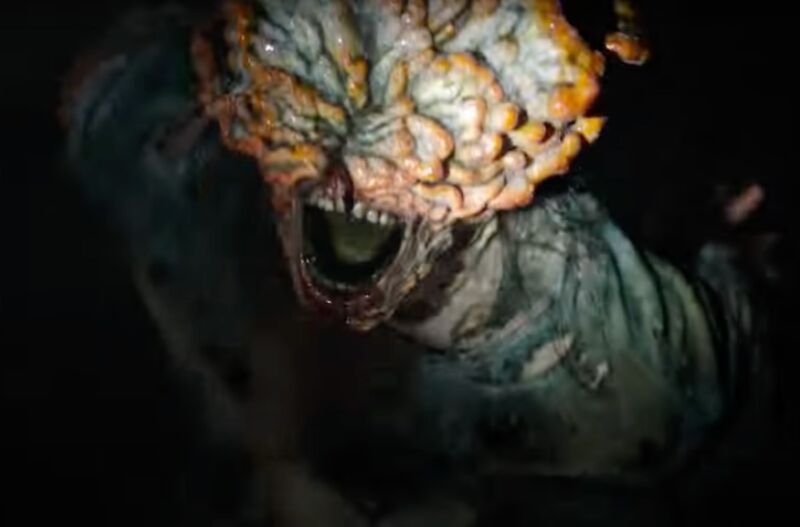
HBO's new sci-fi series The Last of Us debuted earlier this week and is already a massive hit. Based on the critically acclaimed video game of the same name, the series takes place in the 20-year aftermath of a deadly outbreak of mutant fungus that turns humans into monstrous zombie-like creatures (the Infected, or Clickers). While the premise is entirely fictional, it's based on some very real, and fascinating, science.
(Minor spoilers for the series below.)
The first episode showed us the initial outbreak and devastation. Fast forward 20 years, and the world has become a series of separate totalitarian quarantine zones and independent settlements, with a thriving black market and a rebel militia known as the Fireflies making life complicated for the survivors. A hardened smuggler named Joel (Pedro Pascal) is tasked with escorting a teenage girl named Ellie (Bella Ramsey) across the devastated US, battling hostile forces and hordes of zombies, to a Fireflies unit outside the quarantine zone. Ellie is special: She is immune to the deadly fungus, and the hope is that her immunity holds the key to beating the disease.
The basic premise for the fictional pandemic is neatly laid out in the cold open. Two epidemiologists are guests on a 1968 talk show in the vein of The Dick Cavett Show, discussing the possibility of a future pandemic. One cites viruses (specifically an airborne virus, like, say, COVID-19) as the threat that keeps him up at night. The other (played by one of my favorite actors, John Hannah) insists the real threat will come from fungus, and proceeds to make a very convincing case.
As Hannah's Dr. Neuman explains, there really is a family of zombifying parasitic fungi called Cordyceps—more than 400 different species, each targeting a particular species of insect, whether it be ants, dragonflies, cockroaches, aphids, or beetles. In fact, game co-creator Neil Druckmann has said his premise for The Last of Us was inspired in part by an episode of the BBC nature documentary Planet Earth (narrated by Sir David Attenborough) portraying the "zombification" of an ant in vivid detail.

First, the fungus infiltrates the host's exoskeleton and brain via spores scattered in the air, which fall to the ground. When a foraging ant encounters a spore, the spore attaches to the ant's body, burrowing inside. Once inside, the spores sprout long tendrils called mycelia that eventually reach into the brain and release chemicals that make the unfortunate host the fungi’s zombie slave. The chemicals compel the host to move to the most favorable location for the fungus to thrive and grow. Then the fungus slowly feeds on the host, sprouting new spores throughout the body as one final indignity. Those sprouts burst and release even more spores into the air, which go forth to infect even more unsuspecting hosts.
Much of this is consistent with the premise of The Last of Us. Dr. Neuman assures his audience that while fungi seem harmless enough, the danger from Cordyceps is that these fungi are more interested in controlling rather than killing the hosts. He mentions certain fungus-derived hallucinogens (LSD, which comes from ergot, and psilocybin): "Viruses can make us ill, but fungi can alter our very minds.... like a puppeteer with a marionette."
As Neuman's fellow epidemiologist points out, Cordyceps might be real, but the fungi doesn't target humans. Neuman agrees, adding this is because the fungi can't survive if the host's body temperature exceeds 94° F. This is technically accurate, per David Hughes, an evolutionary biologist at Penn State University who has studied Cordyceps for several years. (He also consulted with developer Naughty Dog on The Last of Us game.) "Insects exploit this fact by inducing a behavioral fever to reduce infections," he told Ars. "But going to a hot area reduces fungal growth."



3175x175(CURRENT).thumb.jpg.b05acc060982b36f5891ba728e6d953c.jpg)
Recommended Comments
There are no comments to display.
Join the conversation
You can post now and register later. If you have an account, sign in now to post with your account.
Note: Your post will require moderator approval before it will be visible.